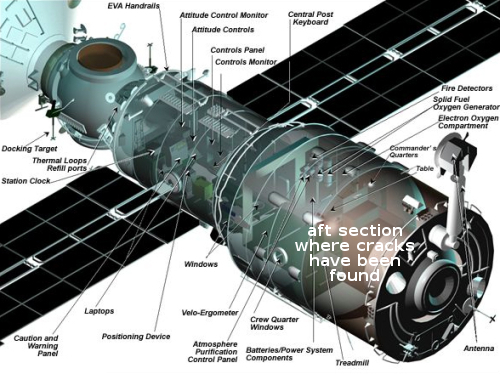NASA: The piece of space junk that crashed through a Florida house came from ISS, and we released it
After completing a careful analysis of the 1.6 pound object that had crashed through two floors of a house in Florida on March 8, 2024, NASA engineers have confirmed that it came from the cargo pallet that was dumped from ISS in March 2021.
As part of the analysis, NASA completed an assessment of the object’s dimensions and features compared to the released hardware and performed a materials analysis. Based on the examination, the agency determined the debris to be a stanchion from the NASA flight support equipment used to mount the batteries on the cargo pallet. The object is made of the metal alloy Inconel, weighs 1.6 pounds, is 4 inches in height and 1.6 inches in diameter.
Though the NASA press release notes the agency will revise its computer models for determining what will burn up in the atmosphere and what will not, it says nothing about reinbursing the homeowner, Alejandro Otero, for the damage to his home. Based on the Outer Space Treaty, the U.S. is likely liable for this damage. I suspect the negotiations are on-going, and if Otero doesn’t have a lawyer yet, he should get one immediately.
After completing a careful analysis of the 1.6 pound object that had crashed through two floors of a house in Florida on March 8, 2024, NASA engineers have confirmed that it came from the cargo pallet that was dumped from ISS in March 2021.
As part of the analysis, NASA completed an assessment of the object’s dimensions and features compared to the released hardware and performed a materials analysis. Based on the examination, the agency determined the debris to be a stanchion from the NASA flight support equipment used to mount the batteries on the cargo pallet. The object is made of the metal alloy Inconel, weighs 1.6 pounds, is 4 inches in height and 1.6 inches in diameter.
Though the NASA press release notes the agency will revise its computer models for determining what will burn up in the atmosphere and what will not, it says nothing about reinbursing the homeowner, Alejandro Otero, for the damage to his home. Based on the Outer Space Treaty, the U.S. is likely liable for this damage. I suspect the negotiations are on-going, and if Otero doesn’t have a lawyer yet, he should get one immediately.


